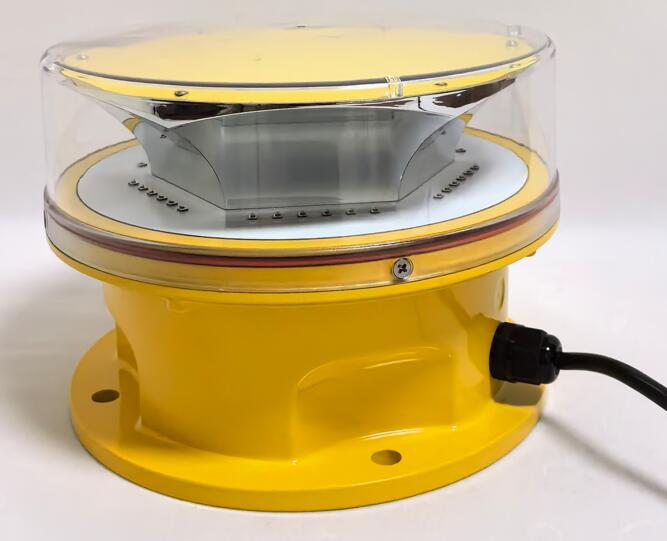FAA L 864: The Red Beacon Guiding Safe Skies
In the realm of aviation safety, visibility plays a pivotal role. Among the many components ensuring the safety of air traffic and preventing collisions with tall structures, FAA L 864 lights are essential. These red flashing beacons are more than just technical fixtures—they are key players in a global safety network that keeps airspace secure day and night.
What Is FAA L 864?
FAA L 864 refers to a specific type of red aviation obstruction lighting defined by the Federal Aviation Administration (FAA). It is a medium-intensity, red flashing beacon designed for night use on tall structures that may interfere with air traffic. These lights are most often installed on communication towers, wind turbines, chimneys, flare stacks, and tall buildings.
According to FAA Advisory Circular 150/5345-43, the FAA L 864 light must emit a red flashing signal with precise intensity, duration, and beam distribution. It is typically used as part of an obstruction lighting system and often paired with other lights, such as white strobes (FAA L-865), to provide 24-hour visibility.
Purpose and Importance of FAA L 864
The primary function of the FAA L 864 beacon is to alert pilots of potential obstacles in the navigable airspace during nighttime operations. While white strobe lights are commonly used during the day, red beacons are preferred at night due to their lower impact on light pollution and residential environments.

When properly installed and maintained, FAA L 864 systems significantly reduce the risk of mid-air collisions by:
Marking the presence of tall structures clearly
Complying with FAA regulations and international standards
Enhancing visibility in low-light or poor weather conditions
| faa l 864 |
Serving as a critical fallback in case of radio or radar failure
Applications Across Industries
The use of FAA L 864 lights spans multiple sectors. These include:
Telecommunications: Towers often exceed 200 feet and are mandated to have obstruction lights, with L 864 units marking the top and intermediate levels.
Energy: Wind turbines, particularly those grouped in farms, pose navigational hazards and are marked with synchronized L 864 systems.
Oil & Gas: Flare stacks in refineries and offshore platforms often include L 864 beacons to prevent aircraft from approaching active burn zones.
Construction & Urban Development: High-rise buildings and cranes within controlled airspace boundaries also use L 864 lights to ensure compliance and visibility.
| FAA L 864 |
Key Specifications of FAA L 864
A standard FAA L 864 beacon must meet rigorous criteria set by the FAA, including:
Color: Aviation red
Flash Rate: 20 to 40 flashes per minute
Beam Pattern: 360-degree horizontal output with specific vertical angles
Intensity: Minimum peak intensity of 2,000 candelas
Mounting: Must be securely installed to withstand environmental stress
Modern versions of L 864 lights use LED technology for higher efficiency, longer lifespan, and reduced maintenance needs compared to traditional incandescent systems.
| FAA L 864 light |
Integration with Dual Lighting Systems
In many cases, FAA L 864 units are installed as part of a dual lighting system. During the day, a white strobe light (FAA L-865) provides visibility, while the L 864 red beacon takes over at night. This combination ensures continuous marking in both daylight and darkness, improving safety in variable lighting conditions.
Some systems also synchronize multiple L 864 units across a structure or group of structures to avoid visual confusion and create a uniform warning pattern.
Environmental and Community Considerations
One reason red beacons like the FAA L 864 are favored at night is their reduced impact on surrounding communities. Unlike intense white strobes, red lights are less disruptive to nearby residents and wildlife.
To further reduce unnecessary lighting, some systems now include aircraft detection technology. These systems activate the L 864 beacons only when an aircraft is detected in the vicinity, preserving dark skies and saving energy while maintaining safety.
Installation and Maintenance Guidelines
Proper installation of FAA L 864 lights is crucial to their effectiveness. Key guidelines include:
Placement: Must be mounted at the highest point of the structure, and at intermediate levels if the structure exceeds 700 feet.
Wiring and Power: Must be weather-resistant and protected from power surges.
Redundancy: Backup systems, including batteries or solar units, ensure functionality during power outages.
Inspection: Regular checks are required to verify light output, flash pattern, and structural integrity.
Failing to properly install or maintain L 864 systems can lead to regulatory violations and increased risk of aviation incidents.
Regulatory Compliance
The FAA requires any structure exceeding 200 feet above ground level—or located near airports regardless of height—to be evaluated for obstruction lighting. If required, the structure owner must comply with FAA lighting standards, including the use of FAA L 864 beacons where applicable.
Compliance ensures not only legal operation but also reduced liability in the event of an aviation-related incident. In many cases, authorities like the FCC or local zoning boards will verify that lighting plans include approved L 864 systems before issuing construction permits.
Advancements in L 864 Technology
The evolution of FAA L 864 systems reflects broader trends in aviation safety and environmental design. Key advancements include:
LED-Based Units: Significantly improved lifespan, reduced energy usage, and lower maintenance.
Smart Monitoring Systems: Enable remote status updates, fault detection, and automated reporting.
Modular Designs: Easier installation, integration with multiple tower types, and scalable configurations.
These innovations make it easier for industries to remain compliant while benefiting from reduced operational costs and higher reliability.
The FAA L 864 beacon is more than just a flashing red light—it is a silent sentinel that helps keep skies safe. From wind farms to urban skyscrapers, its role in aviation safety is both vital and enduring. As air traffic continues to grow and structures reach new heights, the dependable presence of L 864 lights will remain a cornerstone of obstruction marking systems, guiding pilots and protecting lives from sunset to sunrise.
